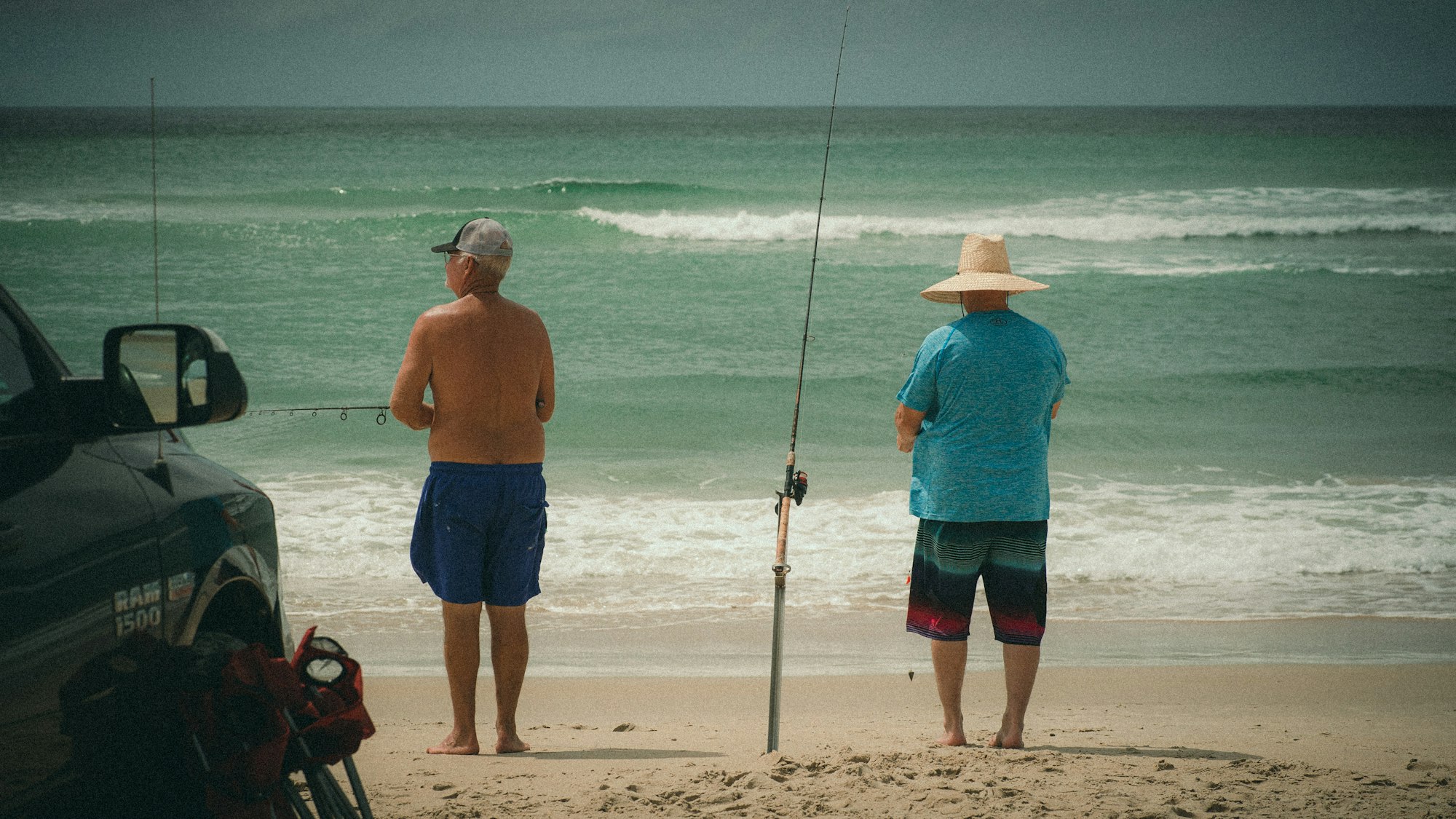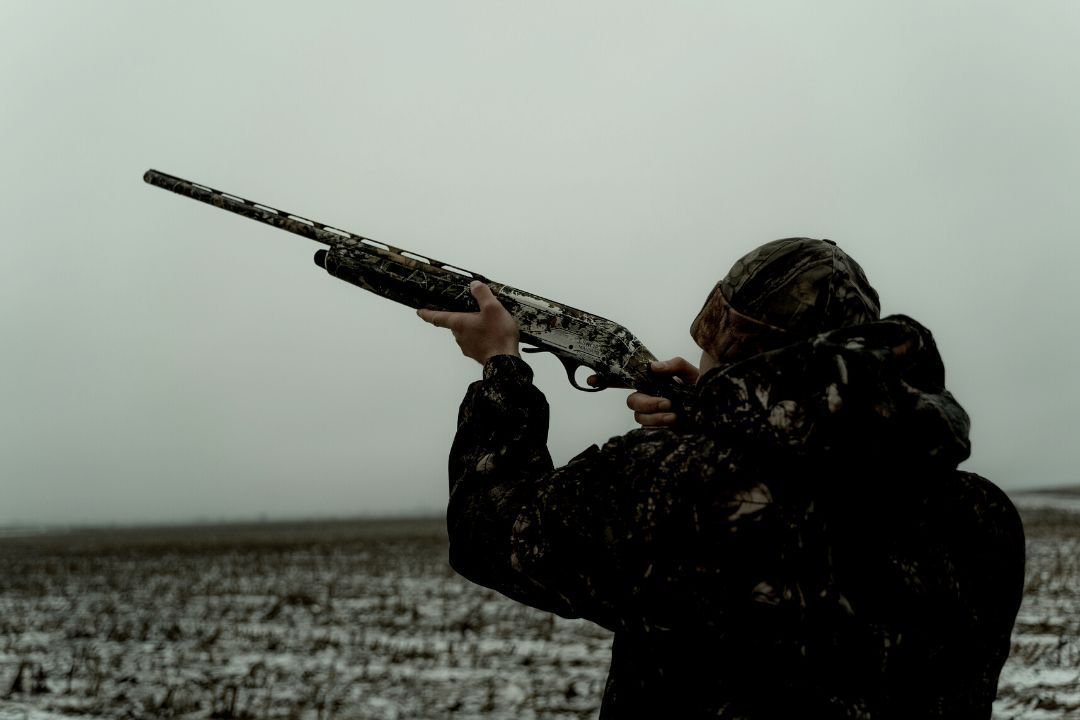How to Choose the Best Turkey Hunting Spots (Without Wasting Your Time)
Are you tired of coming up empty-handed on your turkey hunts? It's time to learn how to choose the right hunting spot. From understanding turkey behavior to scouting techniques, our comprehensive guide covers everything you need to know to maximize your chances of success.
Are you an avid turkey hunter looking for the best turkey hunting spot?
You’re not alone. Thousands of hunters head out to the turkey woods every year, searching for their perfect location for a successful hunt. But with vast areas to cover, it can be hard to know where to start and how to choose the right spot.
That's why we've put together this guide on how to find the best turkey hunting spots without wasting your time! We'll provide tips on what factors to consider when selecting a good site and discuss strategies to help you narrow your choices quickly and efficiently.
So read on and get ready for an exciting hunt!
Understanding Turkey and Its Habitat
Wild turkeys are fascinating creatures that inhabit many parts of North America. Their unique characteristics make them easily recognizable, with their prominent tail feathers and featherless heads that can turn bright red when excited.
The habitat of a turkey is characterized by certain features such as its terrain, vegetation, and food sources. The habitats where these birds can be found vary widely, from woods and forests to open fields and meadows.
Different turkeys prefer different habitats, with some species living in mountainous areas while others prefer low-lying grasslands. Broadly, their habitat can be classified into woodland, forest, and open fields.
Understanding turkey behavior and movement patterns is also essential, as these birds travel long distances for food and water. They are social animals and travel in flocks, with males known for their booming gobble calls to attract females during mating season.
By familiarizing yourself with the signs of turkey activity, such as tracks, droppings, and scratching marks on trees or other surfaces in their natural habitat, you can increase your chances of successfully hunting turkeys. Knowing how to recognize this specific turkey sign is critical to finding wild turkeys while hunting.
Understanding the turkey habitat is essential in selecting the right hunting spot. As you explore and learn more about wild turkeys and their habitat, always remember to respect their space and observe them from a safe distance.
Factors to Consider when Choosing a Turkey Hunting Spot

When deciding on a spot to hunt turkey, numerous essential considerations can determine the outcome of your expedition. Here we will examine key elements and how they could impact your success in finding birds.
Terrain
When searching for the ideal hunting spot, surveying the terrain is paramount. Turkeys are most comfortable moving around on flat or softly inclined land; any area with steep inclines could restrict their range and double your efforts in securing a successful hunt. Consider this fact when evaluating potential sites to pursue these wild creatures!
Water Sources
Turkeys require water for sustenance and, thus, will usually be found surrounding bodies of water like streams, ponds, or rivers. With this in mind, selecting a hunting spot near these aquatic sources may provide the best chance to locate turkeys due to their preferred habitats.
Vegetation
Turkeys prefer dense vegetation, as they provide cover and food sources. Look for hunting spots with thickets, brush, and shrubs, as these will likely attract turkeys.
Food Sources
Turkeys feed on various food sources, including insects, seeds, and berries. Areas with abundant food sources are likely to attract turkeys. When scouting for a hunting spot, look for areas with plenty of food sources, such as fields, meadows, and berry bushes. Areas with oak trees are particularly their favorite.
Weather
The weather can significantly impact turkey behavior. For instance, turkeys tend to be more active on warm and sunny days than cold and rainy days. Therefore, it's essential to consider the weather forecast when choosing a hunting spot.
Considering these factors, you can increase your chances of finding and harvesting a wild turkey.
Researching Hunting Spots
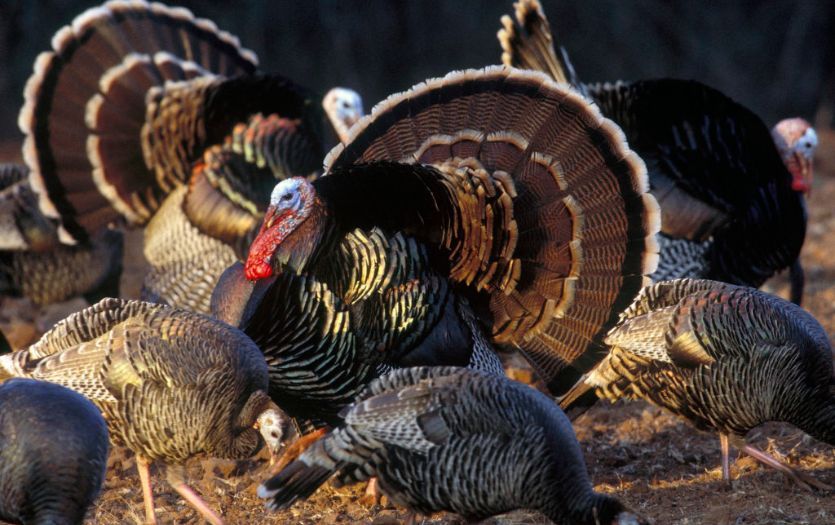
Before you hone your turkey calling skill, you must thoroughly research locations for turkey hunting. When choosing the best turkey hunting spot, exploring potential areas is critical. Here are some tips to help you find the perfect place for your next hunt.
Resources for finding hunting spots
Use a mapping app like On X, Basemap, or Huntstand to identify public lands near you. Also, check your state’s public land website (just Google the name of your state and “public hunting land”)
You'll find plenty of websites and forums with detailed information about terrain, wildlife, and specific rules in each area you plan on visiting. With this knowledge, you can rest assured knowing every aspect of your excursion is taken care of!
Asking for recommendations
If you're looking for the perfect spot to hunt, why not leverage your network of hunters? Ask family and friends who also hunt or join a hunting club – experienced hunters can provide invaluable advice. You can even take it online by contacting social media groups or forums - they may have hidden gems that hadn't crossed your mind!
Visiting potential hunting spots before the hunt
Before the hunt, visiting your shortlisted hunting spots and scouting around is highly advisable. This will allow you to familiarize yourself with the terrain and wildlife.
Additionally, search for indications of turkey activity, such as tracks or droppings, while noting any potential hunting grounds in your evaluation. Ideally, look out for hillsides with older trees accompanied by flat ground (ridges and hilltops) above them when scouting before going on a turkey hunt.
Scouting for Turkey Hunting Spots
Like deer season, scouting is just as integral for a successful turkey hunt. Scouting involves surveying an area to identify the best places to set up camp and garner a prize bird.
Before deciding between a crow call or an owl call to locate that prized gobbler, as a committed hunter, your should start scouting your hunting spots before beginning your hunt; this one step can spell success or failure on your next excursion!
Importance of Scouting
Scouting is crucial in locating turkey hotspots. It helps you identify turkey patterns and routines, locate roosting sites, and find areas with the most turkey activity (areas where they feed and breed). This knowledge lets you position yourself in the best spot for a successful hunt.
Best Times to Scout
Most turkey hunters prefer to scout for turkey hunting spots during the pre-season and mid-season. During the pre-season, turkeys are not being hunted yet, so they are more relaxed and easier to locate. Pre-season scouting allows you to find potential hunting spots and make any necessary adjustments.
Mid-season scouting lets you see how turkeys react to hunting pressure and adjust your hunting strategy accordingly. Mid-season scouting will enable you to adjust your strategy based on turkey behavior. The key is to scout during the same time of day you plan to hunt. This will give you an idea of what the turkeys are doing during that time and where they will likely be.
Tips for Conducting Effective Pre-Season Scouting
For a successful turkey hunting season, plan your scouting expeditions for the early morning and later evening hours when turkeys are most active. Take it slow - just as you would with actual turkey hunting – to increase your chances of success during scouting.
Keep a sharp eye out for activity indicators - such as scratched-up dirt, feathers, or droppings. Even better yet, listen intently for gobbling and pay attention to any movement in the vicinity!
Don't be afraid to follow signs that lead to worn-down trails or logging roads; you'll be shocked at how many birds you may spot this way!
What to Look for When Scouting for Turkey Hunting Spots
Look for areas with abundant food sources, like acorns, berries, and insects. Also, check for potential roosting spots, such as tall trees with thick branches.
It's also essential to check for obstacles like creeks, fences, and thick brush that may make it challenging to approach a turkey undetected.
Tools for Scouting
Scouting for an ideal turkey hunting spot can be a breeze with the assistance of trail cameras and other scouting tools! Trail cams are especially helpful as they allow you to observe turkeys without disturbing them. Binoculars and spotting scopes also come in handy when selecting potential areas from afar. Combining these two methods lets you have your perfect hunt location quickly!
By scouting for turkey hunting spots, you can increase your chances of success and have a more enjoyable hunting experience.
Topographic Maps and Satellite Imagery
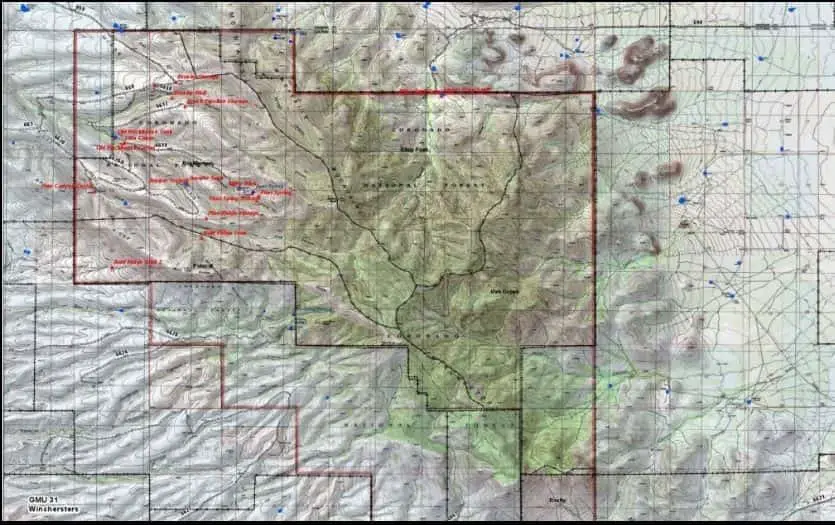
Topographic maps and satellite imagery can be valuable tools for turkey hunters. These resources can help you identify potential hunting spots and plan your scouting efforts. Here's what you need to know about using topographic maps and satellite imagery for turkey hunting.
Interpreting topographic maps
Topographic maps are detailed maps that show the contours of the land, including elevation and slope. You can identify hills, valleys, and bodies of water from a topographical map. They can help identify areas where turkeys may be roosting or feeding.
For example, turkeys often roost on higher ground, so looking for areas with steep slopes and high elevations can be a good starting point. Look for areas with good cover, such as thick woods or brush, and areas with natural food sources.
Understanding how to read and interpret topographic maps can help you identify potential turkey hotspots and plan your scouting trips accordingly.
Using satellite imagery to identify potential turkey hunting spots
You can gain a comprehensive perspective of the land through satellite imagery without being physically present. With these images, you may discover locations that would otherwise remain hidden from view, such as wooded patches filled with trees or dense foliage, which can serve as ideal hiding spots for turkeys.
Additionally, watch for open areas and clearings where turkey roosts might commonly be found near water sources.
Combined with topographic maps, satellite imagery gives you powerful insight into potential habitats and makes your scouting trips significantly more efficient!
Tips for using technology to enhance scouting efforts
Technology can be an excellent tool for improving your scouting efforts. Trail cameras can monitor turkey activity in a particular area, while GPS units or even hunting watches can help you navigate to potential hunting spots.
Additionally, apps like OnX Hunt and HuntStand can provide valuable information about public and private land boundaries, topographic data, and satellite imagery.
However, it's essential to use technology wisely and not rely on it too heavily. Remember that scouting is an integral part of turkey hunting, and there's no substitute for spending time in the field and observing the land firsthand.
Understanding Weather Patterns and Conditions
Understanding weather patterns and conditions is crucial when it comes to turkey hunting. Weather can significantly impact turkey behavior, and hunting during the right weather conditions can increase your chances of success.
Here's what you need to know about weather and turkey hunting.
How weather patterns affect Turkey's behavior
Turkeys are affected by weather patterns just like any other animal. For example, heavy rain can cause turkeys to seek shelter and limit their movement. Similarly, high winds can make it difficult for turkeys to hear, making them more cautious, and lightly pressured birds tend to move into more open areas. Understanding how weather patterns affect turkey behavior can help you predict where and what they'll do.
How to use weather forecasts to predict Turkey's activity
Turkey hunters can benefit immensely from weather forecasts, as they can calculate when and where turkeys will be most active. For instance, if there's a forecast of rain in the morning, you may want to concentrate your search efforts on areas sheltered from precipitation after it stops - typically during the afternoon.
Conversely, high winds often deter turkeys because of their sensitivity to noises created by rustling undergrowth or clattering branches; thus, shifting focus towards more exposed locations may increase chances for success.
The importance of hunting during the right weather conditions
Hunting during the right weather conditions can make quite a difference. For example, hunting during a light can be very productive, as turkeys will often be out feeding and moving around. Similarly, hunting on a fantastic, clear day can be ideal, as turkeys will be more active and easier to locate.
Equip yourself for success with our comprehensive guide to top turkey hunting gear
Final Thoughts
If you're preparing for spring turkey hunting season, there are a few essential factors to consider when choosing the best spot. Research local wildlife sightings, familiarize yourself with the terrain, and make sure you have the right gear for success.
But no matter which spots you choose, when selecting your equipment, our review articles can help you get closer to that perfect hunt. We break down all of our top picks so that you can make an educated and confident purchase.
So whether you're looking for turkey decoys or ground blinds, check out our reviews and find the best gear this season. So step out and make this season your most successful turkey hunting season yet!
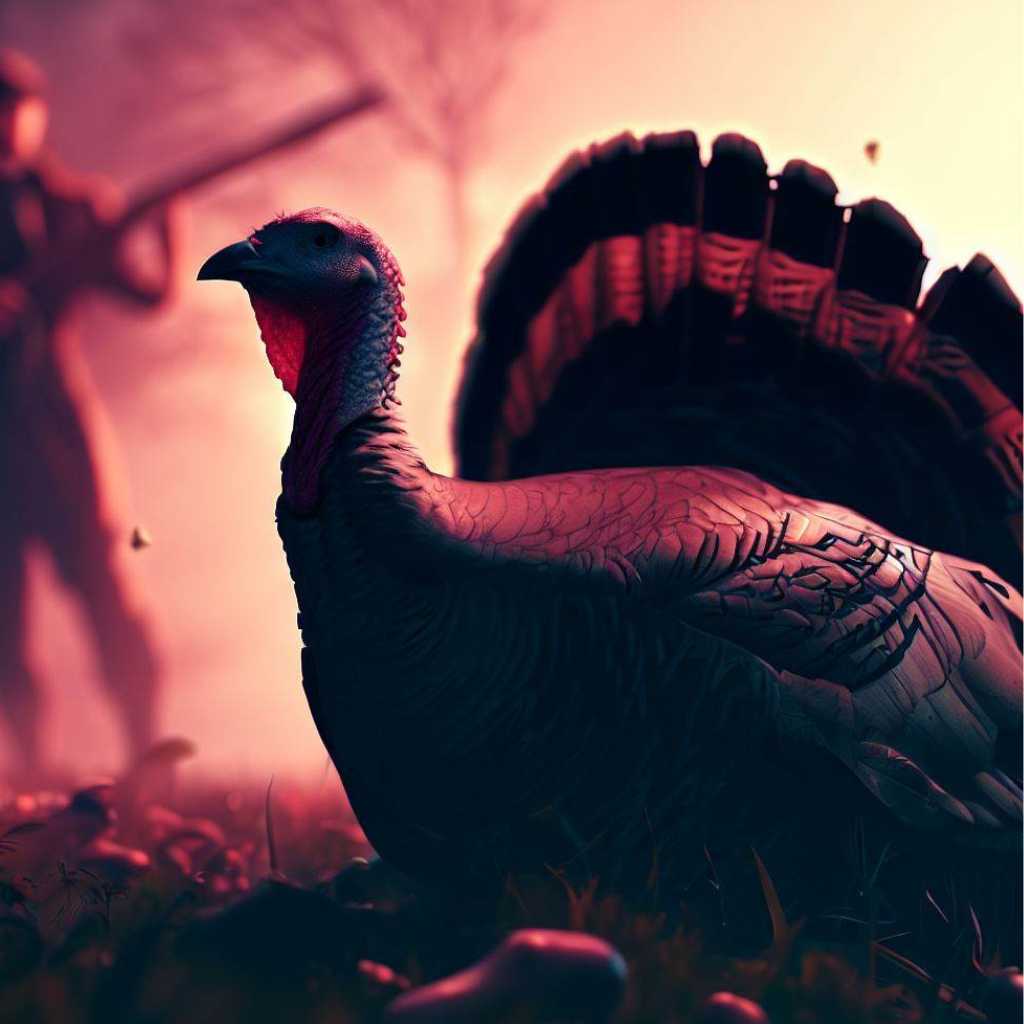
Also, check out some of our other articles:
